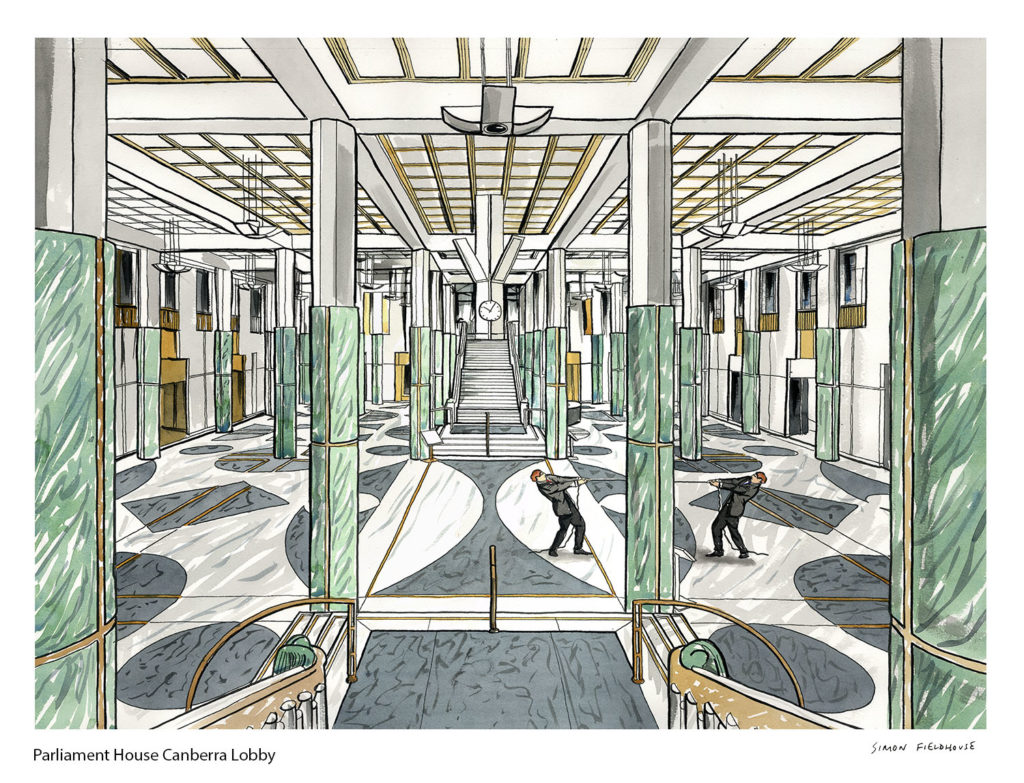
Parliament House Canberra Lobby
Parliament House in Canberra, the purpose-built home of the Australian federal government, is not just an iconic architectural marvel but also the epicenter of political decision-making in the nation. One of its prominent functions is to serve as a hub for various interest groups and stakeholders to engage in the democratic process through lobbying. Lobbying at Parliament House, while often met with mixed perceptions, plays a crucial role in influencing legislative decisions and shaping government policies.
The Role of Lobbying
Lobbying, in the context of Parliament House in Canberra, is the practice of individuals, organizations, and advocacy groups engaging with elected representatives and government officials to convey their concerns, present their viewpoints, and seek support for particular issues or policies. This interaction between citizens and the government is fundamental to a thriving democracy, as it ensures that various voices are heard and considered in the decision-making process.
Lobbyists, whether working independently or for interest groups, use Parliament House as their base of operations. They schedule meetings with parliamentarians, attend committee hearings, and participate in public consultations to articulate their positions and advocate for the interests they represent. This physical proximity to the heart of government allows lobbyists to have direct access to lawmakers and policymakers.
Importance of Lobbying
Lobbying serves several essential functions within the democratic framework. It enables the government to receive vital information and insights from diverse stakeholders. Lobbyists often possess specialized knowledge on their respective issues, which can be invaluable to lawmakers when crafting well-informed policies. Additionally, lobbying acts as a check on government power by offering a counterbalance to the influence of the executive branch. It ensures that decisions are made in the interest of the entire society, not just a select few.
Furthermore, lobbying can facilitate consensus-building and collaboration between different interest groups. When stakeholders from various sectors come together at Parliament House, it encourages the exchange of ideas and, at times, the formation of alliances to address complex issues. This can lead to more holistic and effective solutions to problems that face the nation.
Critique and Regulation
While lobbying has a significant role to play in a democratic system, it is not without its criticisms. Some argue that it can lead to undue influence from powerful interest groups, potentially undermining the democratic principles of representation. To address these concerns, the Australian government has implemented regulations and transparency measures to ensure that lobbying activities are conducted ethically and openly. The Register of Lobbyists, for instance, maintains a public record of all individuals and organizations engaging in lobbying efforts.
Conclusion
Lobbying at Parliament House in Canberra is a vital component of Australian democracy. It allows for the expression of diverse viewpoints, the exchange of expertise, and the fostering of collaboration among stakeholders. While it is not immune to criticism, the regulatory mechanisms in place aim to maintain the integrity of the process. As Parliament House remains the epicenter of political decision-making, lobbying continues to be a dynamic and essential element of the Australian democratic system, ensuring that the government remains accountable, responsive, and representative of the diverse voices within the nation.
Parliament House in Canberra, with its striking architectural design, is more than just a functional government building; it is a symbol of Australian democracy. Among its many features, two elements stand out for their symbolic significance: the majestic marble façade and the iconic gum trees that surround the complex. These elements embody the essence of Australian democracy and its connection to the nation's natural and historical heritage.
The Marble Facade
The exterior of Parliament House is clad in beautiful, gleaming white and green marble. This marble is sourced from the Yass region in New South Wales, a geologically significant area with a deep connection to the Australian landscape. The choice of this material is not arbitrary; it is a tribute to Australia's geological history and its ancient connection to the earth. The marble reflects the strength and resilience of the nation's democratic institutions, grounded in the ancient bedrock of Australia's land.
Furthermore, the pristine white marble signifies the transparency and openness of the Australian government. It serves as a visual reminder that the democratic process should be conducted with integrity and in the full view of the public. The transparent façade of Parliament House encourages an open and accountable government, where the actions of elected representatives are subject to scrutiny.
The Gum Trees
The gum trees surrounding Parliament House offer a stark contrast to the austere marble exterior. These native Australian eucalyptus trees, with their towering trunks and vibrant green foliage, represent the natural beauty and resilience of the Australian landscape. Their presence serves as a reminder of the close connection between the Australian people, their environment, and their democratic institutions.
The gum trees, with their evergreen leaves and unique scent, symbolize endurance and adaptability. In a similar vein, Australian democracy has evolved and adapted over time to meet the changing needs of the nation. The presence of these trees is a testament to the enduring strength of the democratic system in Australia.
Moreover, gum trees have deep historical and cultural significance to Indigenous Australians. They are often seen as symbols of unity, resilience, and survival. By incorporating these native trees into the landscape of Parliament House, it acknowledges the historical and ongoing importance of Indigenous Australians in the nation's democratic story.
Conclusion
The marble façade and the gum trees at Parliament House in Canberra are more than just architectural and landscaping choices. They are symbols of Australian democracy and its deep connection to the land and its people. The marble represents the solid foundation of the nation's democratic institutions, while the gum trees celebrate the adaptability and resilience of the Australian political system. Together, they encapsulate the spirit of transparency, unity, and endurance that characterizes the heart of Australian democracy.